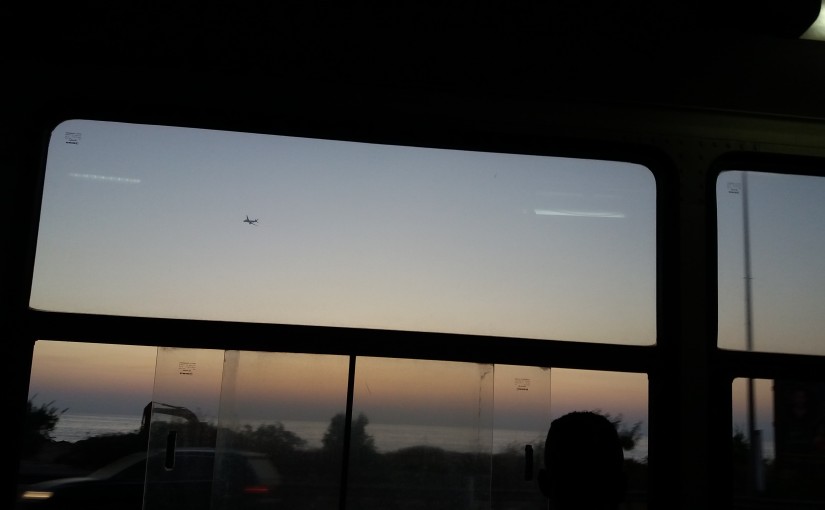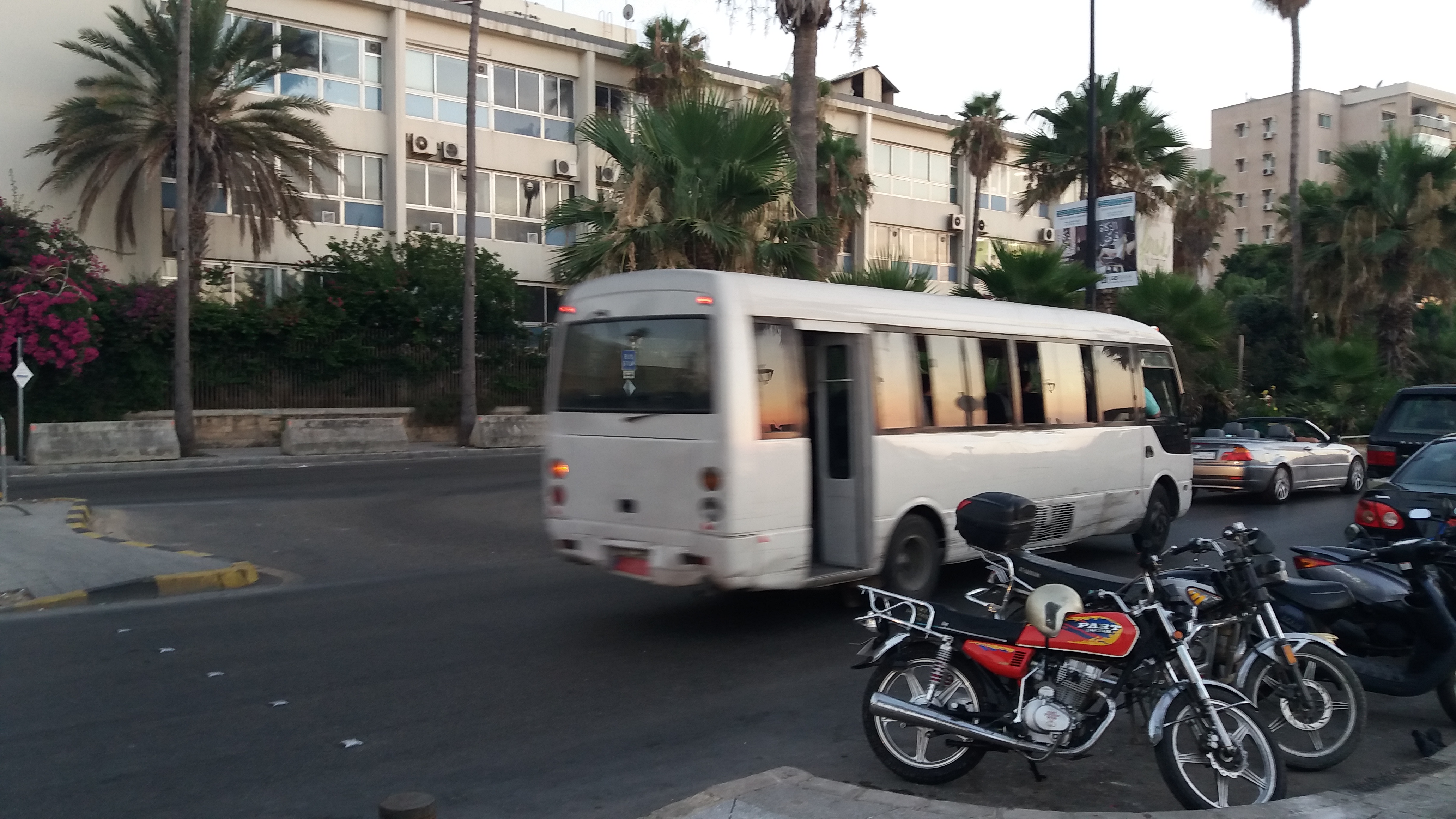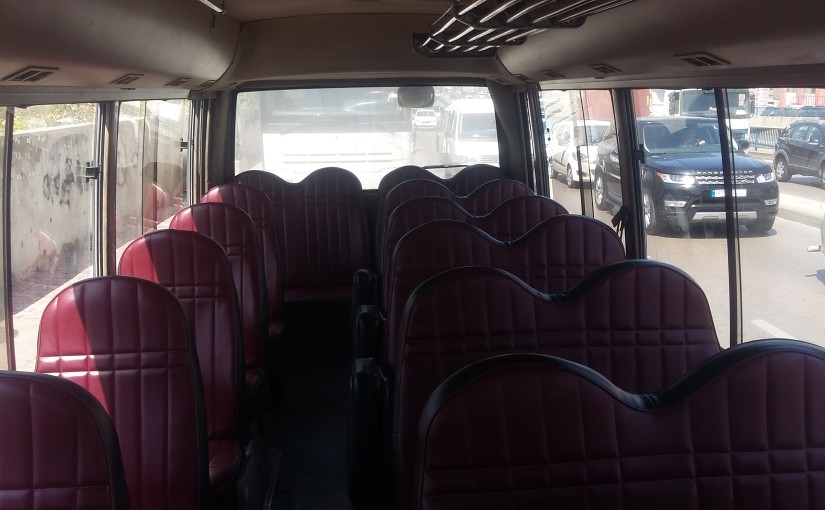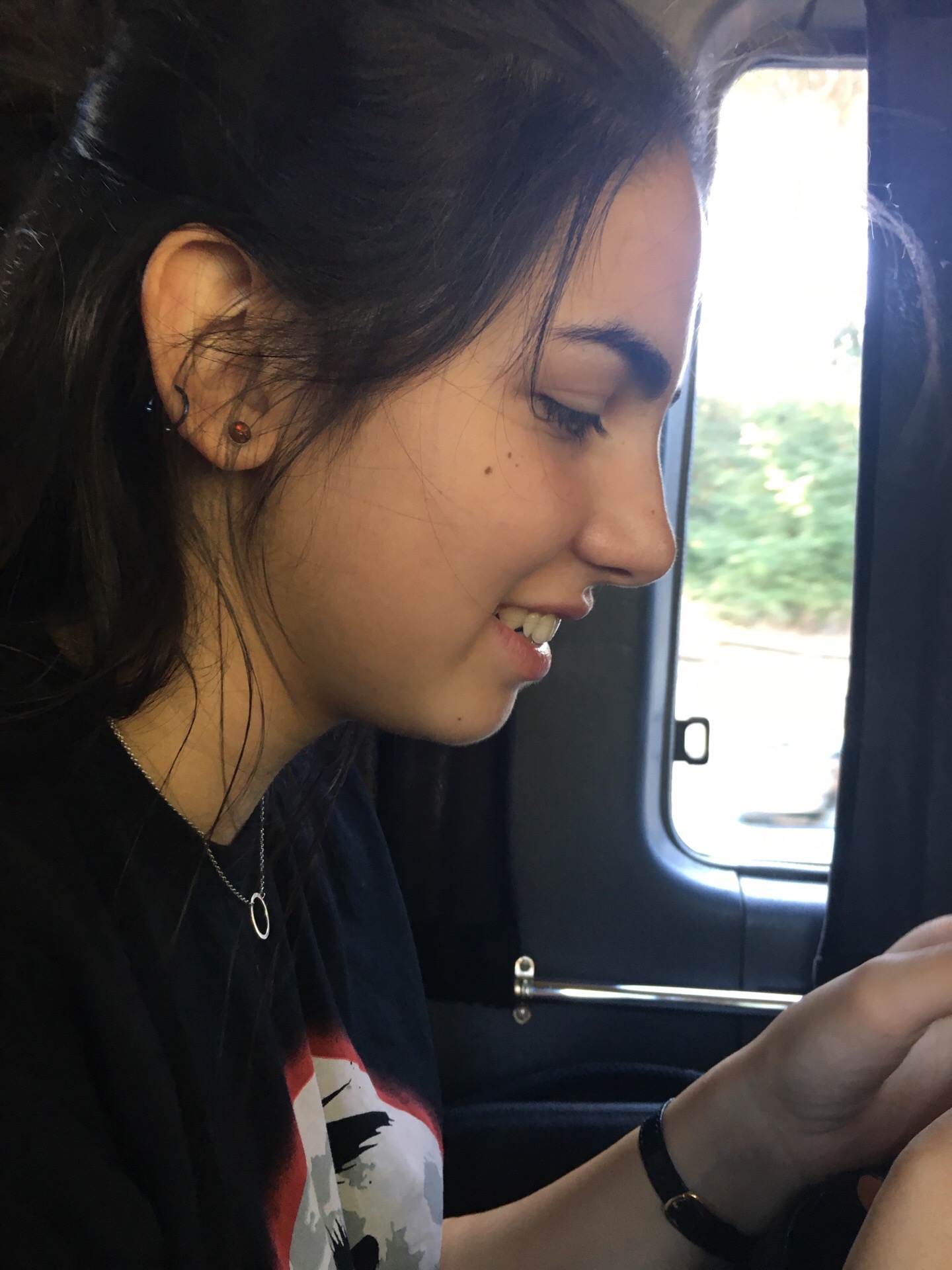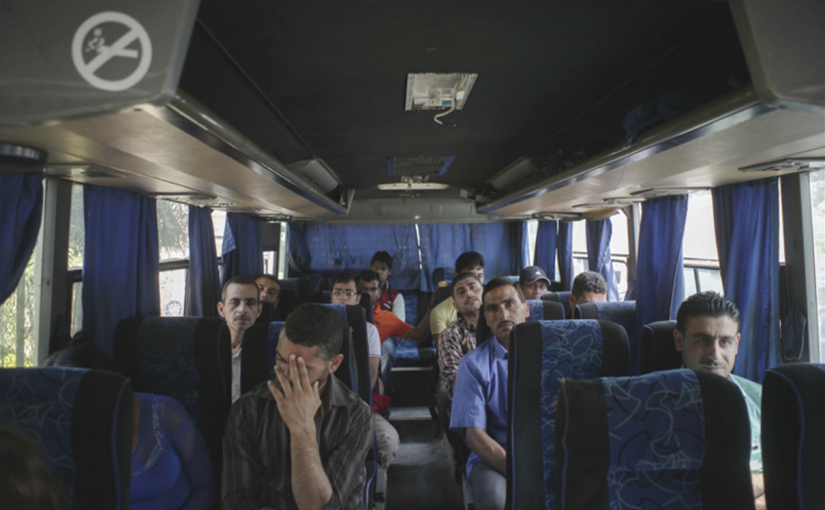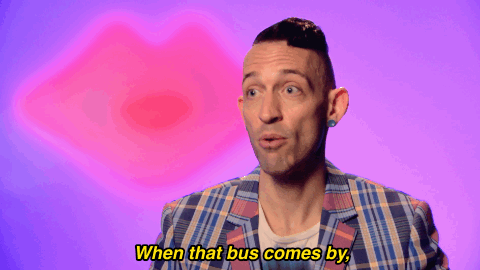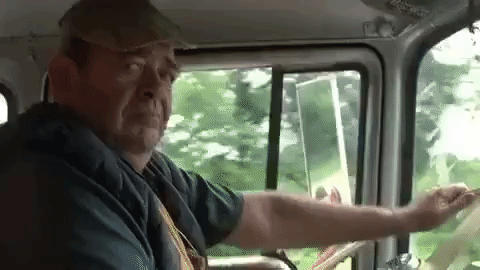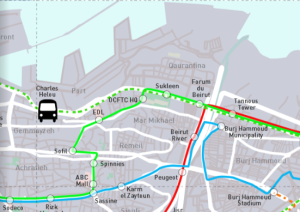Scroll down for English translation
Bus 15, horloge urbaine
par Mira Tfaily
Courir pour l’attraper alors qu’on sait pertinemment qu’il en arrivera un autre cinq minutes plus tard et sauter pour en descendre parce qu’on est trop impatient pour attendre qu’il s’arrête. Les sièges en cuir patiné qui craquent quand on s’assoit un peu trop bien, les cigarettes grillées en cachette à l’arrière en essayant d’éviter le regard amusé du chauffeur.
Porter ses écouteurs sans musique pour ne pas se faire embêter; aller s’asseoir exprès à côté de tous les passagers pour les entendre raconter leurs histoires. Bus stoppé à Dora, bus stoppé à Cola, bus stoppé partout parce que Fawda w ma fi dawle, habibte, c’est ça, Beyrouth. C’est ça, Beyrouth, ou en tout cas c’est beyrouth par morceaux, et ça n’a jamais été autant Beyrouth que dans les fragments de vie que l’on capture à bord du bus.
Bus 15 bondé en milieu de journée avec les piétinements des passagers debout qui forment une dabke folklorique sur des musiques de 2011; bus 15 solitaire de 4h du matin, tu ne sais pas ce qu’il fait là, il est désert, furtif et il roule plutôt vite.
Les chewing gums à l’abricot, les colliers de jasmins, les billets de 1000LL et les camel qui passent de main en main. Les pelures de bezer partout par terre, les restes de café qui jaunissent au fond des gobelets.

Le bus en août et sa chaleur suffocante qui se mêle à l’odeur des gardénias flétris.
La pluie d’octobre qui suinte à travers la fenêtre mal fermée.
Le coucher de soleil insignifiant et majestueux de janvier sur la corniche.
En mai on ne prend plus le bus on marche.
Les ados qui descendent à Gemmayze pour humer l’interdit et brûler leurs ailes sur le bitume âcre de la nuit tombée, les amants qui semblent n’aller nulle part et les ouvriers qui reviennent de Cola avec le sentiment du devoir accompli. La plupart ne savent pas où il va, mais reconnaissent par où il passe.
Le bus 15 en escarpins en revenant de Mar Mikhael, le bus 15 en baskets après un jogging avorté sur la Manara. On décide de s’arrêter au Luna Park, on monte dans la grande roue déserte à 4000LL, et on regarde enfin les bus microscopiques d’en haut, qui rythment inlassablement le trafic de leurs striures blanches.
_________________________________________________________________
Bus 15, The City’s Clockwork
I usually run to catch it even though I know for a fact that another one will come five minutes later; and I jump to get off because I’m too impatient to wait for it to stop. With its patinated leather seats that crack when I make myself a little too comfortable, and the cigarettes I grill on the back seat trying to avoid the amused glance of the driver.
Sometimes wearing my headphones without music to avoid being annoyed, sometimes sitting on purpose near all passengers to hear them tell their stories. Bus stuck at Dora, bus stuck at Cola, bus stuck everywhere because “fawda w ma fi dawle, habibte, this is Beirut.” This is Beirut; or at least, pieces of Beirut, and never has it been more Beirut than in the fragments of life you get to catch onboard.
Bus 15, overcrowded in the middle of the day, where the feet of passengers standing draw a folkloric dabke on songs from 2011; bus 15, solitary at 4am, you don’t know how come it is still on the road, empty and stealthy.
Apricot-flavored gums, jasmine necklaces, 1000LL bills, camel running from hand to hand, with bezer shells all around the floor, and coffee leftovers yellowing the wrinkled plastic cups.
The bus in August and its suffocating heat, rising up in the air along with the mesmerizing smell of rotten gardenia.
The October rain oozing through the half-closed window.
The meaningless and majestic sunset of January on the corniche.
In May, I don’t take the bus — I walk.
The teens that get down at Gemmayze to smell the forbidden and burn their wings on the pungent asphalt of the falling night; the lovers that aren’t heading anywhere, and the workers coming from Cola with their satisfacted sense of accomplishment. Most of the riders don’t know where the bus is going, but they are certain it will pass by some place they know.
Bus 15 wearing stilettos after an evening in Mar Mikhail, bus 15 wearing sneakers after an aborted morning jog on the Manara. I decide to stop at Luna Park, I pay 4000LL to climb in the deserted big wheel, and I finally catch a glimpse of the microscopic buses seen from above, relentlessly punctuating the traffic with their white streaks.
